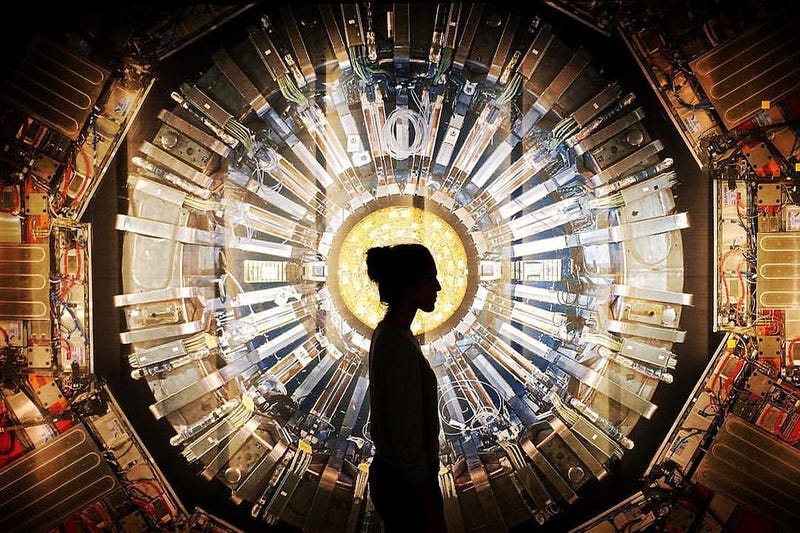
The Large Hadron Collider sits underground, spanning over five miles across beneath the bucolic suburbs of Geneva, Switzerland. This metal behemoth serves to try and understand the most basic building blocks of our universe. The question stands, then: if ghosts are real, shouldn’t the LHC have found them?
That, at least, is what British physicist Brian Cox, Advanced Fellow of particle physics at the University of Manchester, thinks. He made his opinions clear on the BBC Radio Four’s The Infinite Monkey Cage radio show last week (transcript from RealClearScience):
“If we want some sort of pattern that carries information about our living cells to persist then we must specify precisely what medium carries that pattern and how it interacts with the matter particles out of which our bodies are made. We must, in other words, invent an extension to the Standard Model of Particle Physics that has escaped detection at the Large Hadron Collider. That’s almost inconceivable at the energy scales typical of the particle interactions in our bodies.”
In other words, he explained, if ghosts existed, then they should be able to interact with the existing particles of the standard model, at the energy scales that life occurs at.
Now, usually I would jump at the opportunity to debunk the paranormal… but honestly, that explanation is bullshit.
I’m not saying there are ghosts. I do not believe in ghosts. But there are plenty of theorized particles the Large Hadron Collider hasn’t discovered yet, from so-called supersymmetric particles to tiny dark matter particle candidates called axions. “The investigation of very low mass low energy dark amtter is an ongoing thing,” Bob Jacobsen, professor at the University of California, Berkeley who works on the LUX dark matter detector, told Gizmodo. “We still don’t know whether axions exist. How do you know ghosts aren’t made out of axions?” Jacobsen told me to caveat this with the fact that he hasn’t dug into methods for detecting ghosts with particle physics thoroughly, and could be wrong.
But just look at what CERN’s website says about axions:
…The axion is a neutral and very light (but not massless) particle, and it does not interact (or does it very weakly) with conventional matter. In some way one can see the axion as a “strange photon”. In fact, theory predicts that the axion, if it exists, could transform into a photon (and vice versa) in the presence of electromagnetic fields.
SOUNDS A LOT LIKE GHOSTS TO ME, MISTER COX.
Experiments like LUX, a giant vat of xenon in South Dakota, XENON, a giant vat of xenon in an Italian mountain, the CERN Axion Solar Telescope (CAST), and others, are actively searching for dark matter particles, and haven’t found or ruled them out yet. Plus, what if the ghosts just didn’t want to hang out at the Large Hadron Collider, when they could be out spooking people who actually believe in ghosts?
Of course, I’m not saying that ghosts exist. In fact, I vehemently do not believe in them. I’m just saying that while the LHC can explain a whole lot, it hasn’t ruled out the existence of ghosts yet.
[RealClearScience via LiveScience]



